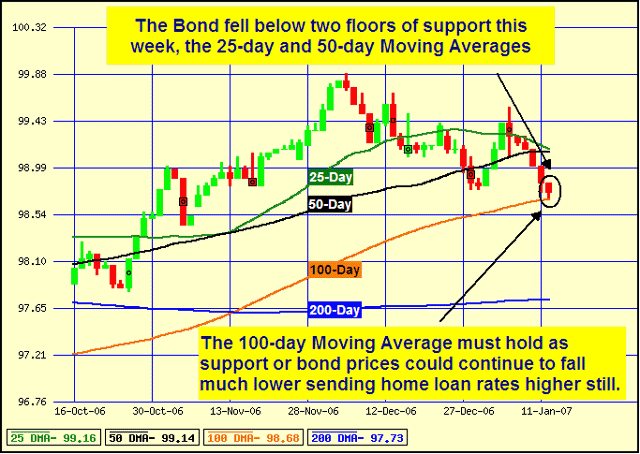January Home Sales Improve Nationally
|
Existing-Home Sales Improve in January
|
|
WASHINGTON, February 27, 2007 -
Sales of existing homes rose in January, reaching the highest level in seven months, according to the National Association of Realtors®. Total existing-home sales – including single-family, townhomes, condominiums and co-ops – increased 3.0 percent to a seasonally adjusted annual rate1 of 6.46 million units in January from an upwardly revised pace of 6.27 million in December. Sales were 4.3 percent below the 6.75 million-unit level in January 2006. David Lereah, NAR’s chief economist, said observers shouldn’t overreact to the sales gain, or to other short-term effects. “Although we’re expecting existing-home sales to gradually rise this year, and buyers are responding to the price correction, some unusually warm weather helped boost sales in January,” he said. “On the flip side, the winter storms that disrupted so much of the country in February could negatively impact the housing market. “Although the data is seasonally adjusted, these weather events are unusually large – many transaction closings were postponed in February, and home shopping was essentially shut down for about a week in many areas,” he said. “We shouldn’t be surprised to see a near-term sales dip, but that will be followed by a continuing recovery in home sales.” Total housing inventory levels rose 2.9 percent at the end of January to 3.55 million existing homes available for sale, which represents a 6.6-month supply at the current sales pace – unchanged from the revised December level. Supplies peaked at 7.4 months in October. “Inventories are looking better, but price softness should continue until spring when the market is expected to become more balanced,” Lereah said. The national median existing-home price2 for all housing types was $210,600 in January, down 3.1 percent from January 2006 when the median was $217,400. The median is a typical market price where half of the homes sold for more and half sold for less. NAR President Pat Vredevoogd Combs, from Grand Rapids, Mich., and vice president of Coldwell Banker-AJS-Schmidt, said a broader view shows the housing market stabilizing. “The market is trending up from its low last fall, and that is important in restoring confidence to buyers who’ve been on the sidelines,” said Combs. “Since buyers can find more favorable terms, and they are looking for a place to call home for some years to come, getting into the market now make sense because it’s a choice many didn’t have during the boom period of bidding wars in much of the country.” According to Freddie Mac, the national average commitment rate for a 30-year, conventional, fixed-rate mortgage was 6.22 percent in January, up from 6.14 percent in December; the rate was 6.15 percent in January 2006. Single-family home sales rose 3.5 percent to a seasonally adjusted annual rate of 5.69 million in January from an upwardly revised 5.50 million in December, but were 4.2 percent below the 5.94 million-unit level in January 2006. The median existing single-family home price was $209,200 in January, down 3.5 percent from a year earlier. Existing condominium and cooperative housing sales slipped 0.1 percent to a seasonally adjusted annual rate of 767,000 units in January from a downwardly revised pace of 768,000 in December. Last month’s sales activity was 5.7 percent below the 813,000-unit pace in January 2006. The median existing condo price3 was $222,200 in January, up 0.5 percent from a year ago. Regionally, existing-home sales in the West rose 5.6 percent to an annual pace of 1.32 million in January but were 9.6 percent lower than a year ago. The median price in the West was $321,300, down 4.6 percent from January 2006. In the Midwest, existing-home sales increased 4.8 percent in January to a level of 1.53 million, and were 0.6 percent lower than January 2006. The median price in the Midwest was $162,600, which is 3.5 percent below a year ago. Existing-home sales in the South rose 2.0 percent to an annual sales rate of 2.54 million in January, but were 7.3 percent below a year ago. The median price in the South was $174,600, which is 1.7 percent below January 2006. Existing-home sales in the Northeast were at a level of 1.07 million in January, unchanged from December, and were 5.9 percent higher than January 2006. The median existing-home price in the Northeast was $260,700, down 1.2 percent from a year earlier. The National Association of Realtors®, “The Voice for Real Estate,” is America’s largest trade association, representing more than 1.3 million members involved in all aspects of the residential and commercial real estate industries. # # # 1 The annual rate for a particular month represents what the total number of actual sales for a year would be if the relative pace for that month were maintained for 12 consecutive months. Seasonally adjusted annual rates are used in reporting monthly data to factor out seasonal variations in resale activity. For example, home sales volume is normally higher in the summer than in the winter, primarily because of differences in the weather and family buying patterns. Each February, NAR Research incorporates a review of seasonal activity factors and fine-tunes historic data for the previous three years based on the most recent findings. Revisions have been made to monthly seasonally adjusted annual sales rates for 2004 through 2006, as well as the inventory month's supply data. Existing-home sales, which include single-family, townhomes, condominiums and co-ops, are based on transaction closings. This differs from the U.S. Census Bureau’s series on new single-family home sales, which are based on contracts or the acceptance of a deposit. Because of these differences, it is not uncommon for each series to move in different directions in the same month. In addition, existing-home sales, which generally account for 85 percent of total home sales, are based on a much larger sample – nearly 40 percent of multiple listing service data each month – and typically are not subject to large prior-month revisions. 2 The only valid comparisons for median prices are with the same period a year earlier due to the seasonality in buying patterns. Month-to-month comparisons do not compensate for seasonal changes, especially for the timing of family buying patterns. Existing-home sales for February will be released March 23. The next Pending Home Sales Index will be on March 6 and the forecast will be revised March 13. 3 Because there is a concentration of condos in high-cost metro areas, the national median condo price can be higher than the median single-family price. In a given market area, condos typically cost less than single-family homes. Statistical data, charts and surveys also may be found by clicking on Research |


![[Logo: Homes and Communities: U.S. Department of Housing and Urban Development]](http://www.hud.gov/images/common/hgv-bnr-logo2.gif)

![[Vea la versión en español de esta página]](http://www.hud.gov/images/common/hgv-bnr-espanol2.gif)
![[Display the text version of this page]](http://www.hud.gov/images/common/hgv-bnr-text.gif)
![[Search/Index]](http://www.hud.gov/images/common/hgv-bnr-search.gif)

![[Logo: HUD seal]](http://www.hud.gov/images/common/hgv-icn-seal.gif)





